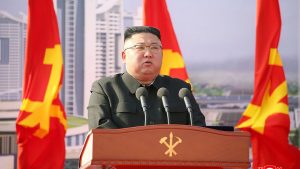Rush to ‘normalcy’

WITH THE SHIFT to Alert Level 3 in Metro Manila, parkgoers took the time for a Sunday stroll and bike ride at the Marikina River park on Oct. 17 in Marikina City. — PHILIPPINE STAR/MICHAEL VARCAS
Enough vehicles are again traversing them to tie up traffic on such major National Capital Region (NCR) thoroughfares as EDSA. All-night drinking sessions are back, and so are visits to this or that tourist destination. Some buses and jeepneys are ferrying passengers at full capacity, and enough commuters are flocking daily to the MRT and LRT stations to get into almost the same kilometric lines that jammed them in pre-pandemic times.
The malls are admitting thousands eager to eat out, do some shopping, or enjoy their air-conditioning and the Christmas carols their music systems are grinding out. The usual “ber”-month hordes in Manila’s Divisoria market are back to the earnest pursuit of bargains in toys, clothes, household and other goods for the country’s month-long gift-giving holidays. And thousands trooped to the so-called Dolomite Beach of Manila Bay to feel the fake “sand” between their toes or to just breathe in the dolomite dust-laden air of the Department of Environment and Natural Resources’ “white beach” folly.
From Alert Level 4, the Inter-Agency Task Force (IATF) for the Management of Emerging Infectious Diseases placed the NCR and outlying provinces in Alert Level 3 in Oct. 16 — and even intimated that Alert Level 2 is possible in the region and other areas by the end of November. Government spokespersons were even promising everyone “a better Christmas” as quarantine restrictions are further relaxed by the last weeks of December.
As business and service establishments including movie houses were allowed to reopen and their occupancy rates expanded, and as more workers and other wage earners returned to and from work via public transport, one can’t blame them for thinking that Alert Level 3 had ushered in a return to “normalcy.” More and more people are either throwing caution to the winds on the assumption that the Philippines’ worst public health crisis in a century has passed, or are forced, or happy to ignore, such health protocols as social distancing in crowded public places.
The IATF decision was based on the supposed decline in the number of new COVID-19 infections and the consequent drop in hospital occupancy. But the spectacle of the thousands massed cheek-by-jowl at the Dolomite Folly was enough to alarm some senators, who urged the shutdown of the beach so as to prevent a repeat of Oct. 24’s potentially super-spreader event.
The senators were not alone in their reservations over the early easing of quarantine protocols. Medical doctors and other professionals also raised serious doubts about its timeliness and the reliability of the numbers on which it was based.
Some of the former said in mid-October that hospital emergency rooms and COVID-19 wards were still crammed with patients, although the numbers did drop by the end of the month. But the shortage of nurses is still a major problem because many had either resigned and are in different lines of work, or have left the country for hospitals in foreign countries because of the low wages and practically non-existent benefits they get in the Philippines.
The Duterte regime has raised its policemen’s salaries but not those of nurses. When their associations asked him to increase nurses’ salaries, President Rodrigo Duterte even added insult to injury by dismissing that plea and is on record as blithely telling nurses to “Magpulis na lang kayo” (join the police force instead). Echoing his indifference, one senadora noted for her billions and disdain for the poor even chastised nurses for supposedly putting money above their profession’s care-giving responsibilities to the public.
Among the consequences of the shortage of nurses and other health workers, said one doctor, are that those who are still on the job are being overworked and even more COVID-vulnerable, and that the hospitals’ have to turn away non-COVID patients. The pandemic is still serious enough to so adversely affect the entire health system that it is probably claiming more lives than are reflected in government statistics.
To the same claim that the number of new COVID cases is dropping, the mathematician head of the University of the Philippines Pandemic Response Team agreed that based on data from the Department of Health, both the number of new cases as well as hospital admission and occupancy rates are indeed declining. But he told the news media that it is nevertheless possible that new cases are either being underreported, or that some have not been detected early enough because of the differences in the accuracy of the testing methods hospitals and laboratories use.
He emphasized the need for raising testing rates, as did medical doctors who also observed that the government’s determination to revive the economy has to be accompanied by an increase in the vaccination rate. As it is, however, it is still below 500,000 a day in this country of over 100 million people, and while enough vaccine supplies are finally available, they are not getting fast enough to areas outside the NCR, hence the continuing surge in the number of new cases in those places.
Why then the rush to declare the country in a state close to “normalcy” despite these lingering issues, the most worrisome of which is the apparent disconnect between what doctors are experiencing on the ground and the Duterte regime’s confident narrative that the contagion has been contained?
The answer should be clear enough even to the single-digit IQued. It is to combat the perception, validated by most of the results of the surveys, that the regime response to the pandemic has been so mismanaged that it is preventing the reopening of the economy. The latter’s consequences have been catastrophic to small and medium enterprises, and hence to the four million-plus workers who have lost their means of livelihood. Bloomberg Communications’ assessment that the regime has been egregiously incapable of containing the spread of the disease and reviving the economy only confirms what is already evident to more informed Filipinos.
It is to reverse that view, which could have a bearing on the chances of regime candidates in 2022, that it is doing its all to make it appear that it has succeeded in so addressing the contagion that there are only a few weeks before everything, including the economy, goes back to normal.
There is another election-related reason. Without economic recovery, government revenues via taxes will continue to decline to the disadvantage of the incumbent candidates and their clones and surrogates who, in “normal” times, are able to freely access such funds during electoral campaigns.
Whether the numbers do reflect the real state of the pandemic or not, the crucial question is whether the mass of the electorate –the 87% that decide who will govern this country — can or will see through the subterfuges devised by the ruling clique of dynasts and oligarchs to deceive the public.
But the results of the surveys on voter preferences are far from encouraging. They in effect reveal the Filipino millions’ scant awareness of both history and present circumstances, and their consequent bias in favor of despotic rule, incompetence, mendacity, and corruption. And this is before the usual suspects have released the bulk of the billions at their disposal for media exposure and manipulation, and for vote-buying and voter intimidation.
Will June 30, 2022 usher in a new time of hope? Or will the same horrors spawned by the black lagoon of Philippine politics still be in power then to complete this country’s ruin because the inability to remember the past has made its repetition as inevitable as death?
Luis V. Teodoro is on Facebook and Twitter (@luisteodoro).




